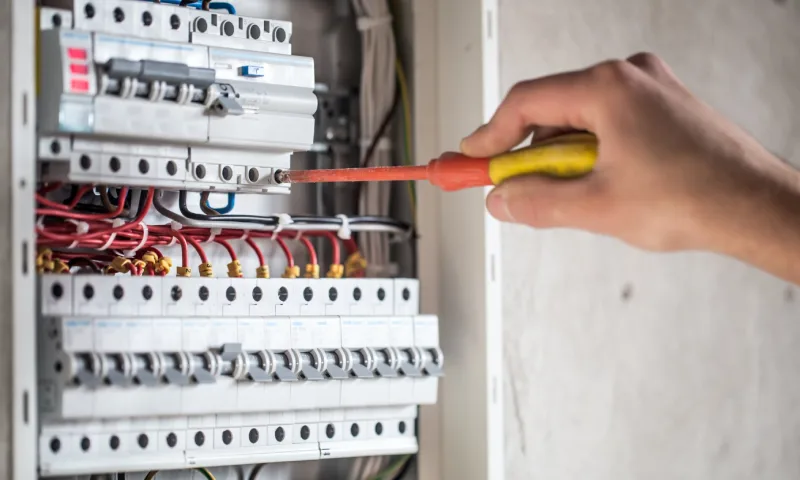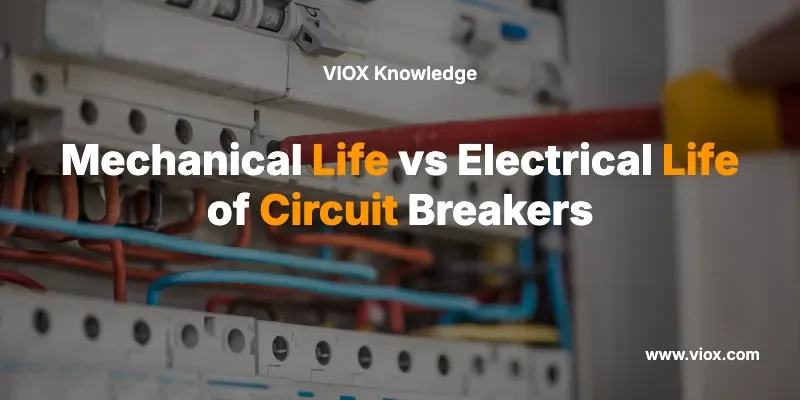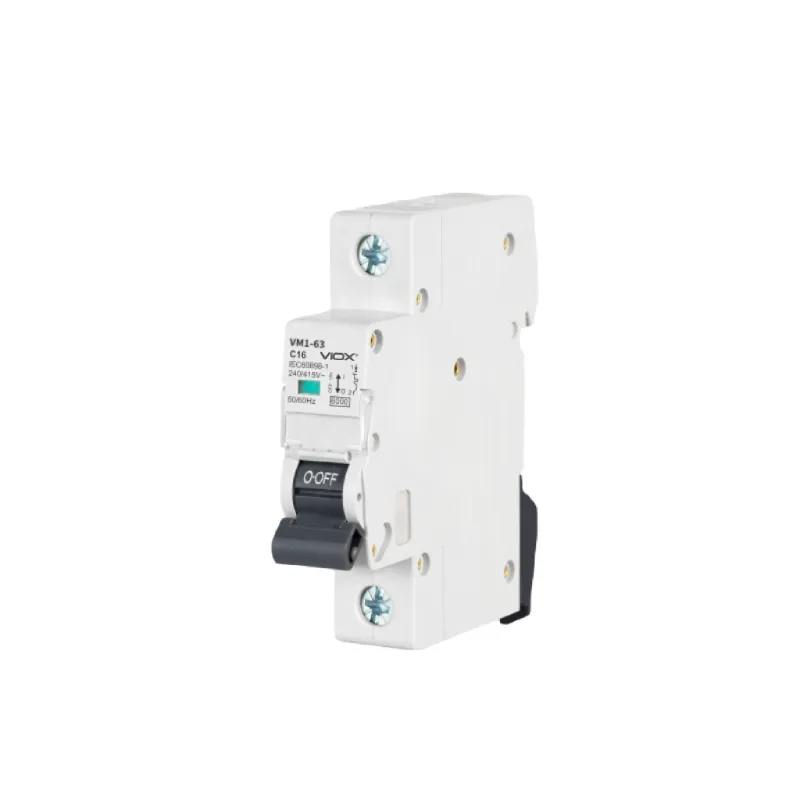Přímá odpověď: The mechanical life of a circuit breaker refers to the total number of open/close operations it can perform under no-load conditions, while electrical life refers to the number of operations it can perform while interrupting actual electrical current. Mechanical life is typically 10-50 times longer than electrical life, with mechanical operations ranging from 10,000-30,000 cycles compared to electrical operations of 100-3,000 cycles.
Understanding these differences is crucial for proper jistič selection, maintenance scheduling, and ensuring electrical system safety and reliability.

What Are Mechanical Life and Electrical Life?
Mechanical Life Definition
Mechanical life represents the maximum number of opening and closing operations a circuit breaker can perform when no electrical current is flowing through it. These are purely mechanical movements of the breaker’s contacts without any electrical stress or arc formation.
Electrical Life Definition
Electrical life indicates the maximum number of operations a circuit breaker can perform while interrupting electrical current under normal or fault conditions. Each electrical operation subjects the breaker to electrical stress, arc formation, and contact erosion.
Key Differences Between Mechanical and Electrical Life
| Aspekt | Mechanická životnost | Elektrická životnost |
|---|---|---|
| Definice | Operations with no current flow | Operations while interrupting current |
| Typický rozsah | 10,000-30,000 cycles | 100-3,000 cycles |
| Stress Factors | Physical wear only | Electrical stress + physical wear |
| Arc Formation | Žádný | Significant arcing occurs |
| Contact Erosion | Minimální | Progressive degradation |
| Testovací norma | IEC 62271-100, IEEE C37.09 | IEC 62271-100, IEEE C37.04 |
| Maintenance Impact | Predictable wear patterns | Requires electrical testing |
Operational Stress Comparison
| Stress Type | Mechanické operace | Elektrické operace |
|---|---|---|
| Physical Wear | Springs, linkages, mechanisms | All mechanical components |
| Contact Degradation | Surface oxidation only | Arc erosion, pitting, welding |
| Vlivy teploty | Ambient temperature only | Arc temperatures (15,000°C+) |
| Insulation Stress | Žádný | Dielectric breakdown risk |
| Gas/Oil Degradation | Minimální | Decomposition from arcing |
Why Electrical Life Is Significantly Shorter
Arc Formation Impact: When a circuit breaker interrupts current, an electrical arc forms between the opening contacts. This arc:
- Reaches temperatures exceeding 15,000°C
- Causes contact material erosion
- Creates metal vapor and gas decomposition
- Generates electromagnetic forces
Contact Erosion Process: Each electrical operation removes microscopic amounts of contact material through:
- Thermal erosion from arc temperature
- Mechanical erosion from electromagnetic forces
- Chemical erosion from oxidation and contamination
- Electrical erosion from current density effects
⚠️ Bezpečnostní upozornění: Never operate circuit breakers beyond their rated electrical life as this can lead to catastrophic failure, fire, or explosion hazards.
Circuit Breaker Life Specifications by Type
Low Voltage Circuit Breakers (≤1000V)
| Typ jističe | Mechanická životnost | Elektrická životnost | Typické aplikace |
|---|---|---|---|
| Miniature (MCB) | 20 000 cyklů | 10,000 @ rated current | Rezidenční, lehké komerční |
| Lisované pouzdro (MCCB) | 10,000-25,000 cycles | 1,000-10,000 cycles | Industrial distribution |
| Insulated Case (ICCB) | 10 000 cyklů | 3,000-5,000 cycles | Motor control, feeders |
| Air Circuit (ACB) | 10,000-30,000 cycles | 1,000-8,000 cycles | Main distribution |
Medium Voltage Circuit Breakers (1kV-38kV)
| Technologie | Mechanická životnost | Elektrická životnost | Klíčové vlastnosti |
|---|---|---|---|
| Vakuum | 10,000-30,000 cycles | 100-3,000 cycles | Minimální údržba |
| Plyn SF6 | 10,000-25,000 cycles | 100-2,000 cycles | High interrupting capacity |
| Vzduchový výbuch | 10 000 cyklů | 500-1,500 cycles | Legacy technology |
| Oil | 5,000-10,000 cycles | 300-1,000 cycles | Starší instalace |
High Voltage Circuit Breakers (>38kV)
| Napěťová třída | Mechanická životnost | Elektrická životnost | Critical Considerations |
|---|---|---|---|
| 72.5kV | 10 000 cyklů | 100-500 cycles | Transmission applications |
| 145kV | 10 000 cyklů | 100-300 cycles | Grid interconnection |
| 245kV+ | 5,000-10,000 cycles | 50-200 cycles | Kritická infrastruktura |
Factors Affecting Circuit Breaker Life
Mechanical Life Factors
- Operating mechanism type (spring, hydraulic, pneumatic)
- Ambient temperature and humidity
- Vibration and seismic conditions
- Maintenance quality and frequency
- Lubrication condition
Electrical Life Factors
- Fault current magnitude (higher current = shorter life)
- Arc duration (faster opening = longer life)
- Power factor (inductive loads more severe)
- Recovery voltage (system voltage recovery rate)
- Operating sequence (close-open vs. open-close-open)
Tip odborníka: Circuit breakers used in motor starting applications experience reduced electrical life due to high inrush currents, even though these aren’t technically fault conditions.
How to Determine Circuit Breaker Life Requirements
Step 1: Analyze Operating Conditions
- Calculate expected mechanical operations per year
- Estimate electrical operations per year
- Identify maximum fault current levels
- Determine duty cycle requirements
Step 2: Apply Derating Factors
| Stav | Derating Factor | Aplikace |
|---|---|---|
| High fault current | 0.5-0.8 | Reduce electrical life |
| Časté přepínání | 0.7-0.9 | Reduce mechanical life |
| Poor maintenance | 0.6-0.8 | Apply to both |
| Harsh environment | 0.8-0.9 | Primarily mechanical |
| Critical application | 0.5-0.7 | Conservative safety factor |
Step 3: Calculate Required Life
Required Mechanical Life = (Annual mechanical ops × Service years) ÷ Derating factor Required Electrical Life = (Annual electrical ops × Service years) ÷ Derating factor
Maintenance and Life Extension Strategies
Mechanical Life Extension
- Regular lubrication of operating mechanisms
- Kalibrace of trip settings and timing
- Inspekce of springs and linkages
- Ochrana životního prostředí (heating, ventilation)
- Vibration monitoring in critical applications
Electrical Life Extension
- Contact resistance monitoring to detect erosion
- Insulation testing to verify dielectric integrity
- Arc chamber inspection for contamination
- Contact replacement at 70-80% of rated life
- Gas/oil analysis for decomposition products
⚠️ Doporučení profesionála: Electrical testing should be performed by qualified technicians using appropriate safety procedures and PPE.

Normy a požadavky na testování
Mezinárodní standardy
- IEC 62271-100: High-voltage switchgear and controlgear
- IEC 60947-2: Low-voltage switchgear and controlgear
- IEEE C37.04: Rating structure for AC high-voltage circuit breakers
- IEEE C37.09: Test procedures for AC high-voltage circuit breakers
Testing Categories
- Type testing – Manufacturer verification of design
- Routine testing – Every manufactured unit
- Periodic testing – In-service verification
- Condition assessment – Life remaining evaluation
Selection Criteria for Circuit Breaker Life
When Mechanical Life Is Primary Concern
- Load switching applications (transformers, capacitors)
- Transfer switching systems
- Maintenance switching operations
- Remote control applications
When Electrical Life Is Primary Concern
- Fault protection applications
- Motor starting/stopping
- Arc furnace protection
- Přepínání kondenzátorových baterií
Decision Matrix for Life Requirements
| Typ aplikace | Priority Factor | Typical Life Ratio (M:E) |
|---|---|---|
| Protection only | Elektrická životnost | 20:1 to 50:1 |
| Load switching | Mechanická životnost | 10:1 to 20:1 |
| Ovládání motoru | Both equal | 5:1 to 15:1 |
| Capacitor switching | Elektrická životnost | 15:1 to 30:1 |
Často kladené otázky
What happens when a circuit breaker exceeds its electrical life?
When electrical life is exceeded, contact erosion increases failure risk, arc interruption capability decreases, and the breaker may fail to clear faults safely, potentially causing equipment damage or fire hazards.
Can mechanical life be converted to electrical life?
No, these are separate ratings. Operating a breaker electrically always consumes both mechanical and electrical life, but mechanical operations only consume mechanical life.
How do you monitor circuit breaker life in service?
Use operation counters for mechanical operations, fault current monitoring for electrical stress, contact resistance measurements, and periodic maintenance testing per manufacturer recommendations.
What’s the difference between rated life and actual life?
Rated life represents laboratory test conditions. Actual life depends on operating environment, current levels, maintenance quality, and specific application stresses.
Should you replace circuit breakers at 100% of rated life?
Industry best practice recommends replacement or major refurbishment at 70-80% of rated electrical life to maintain reliable protection and safety margins.
How does fault current level affect electrical life?
Higher fault currents create more severe arcing conditions, reducing electrical life exponentially. A breaker interrupting 50% of rated current may achieve 2-3 times longer electrical life.
Can circuit breaker life be extended through maintenance?
Mechanical life can be significantly extended through proper maintenance. Electrical life can be partially restored through contact replacement, but the interrupting chamber has finite life.
What documentation is required for life tracking?
Maintain operation logs, fault current records, maintenance histories, test results, and manufacturer life curves for accurate life assessment and regulatory compliance.
Pokyny pro výběr expertů
Pro nové instalace:
- Calculate expected operations over design life
- Apply appropriate safety factors (typically 1.5-2.0)
- Consider future system growth and fault levels
- Specify monitoring capabilities for life tracking
For Existing Systems:
- Review historical operation data
- Assess current condition through testing
- Plan replacement before reaching critical life limits
- Consider upgrading to higher-life technologies
⚠️ Critical Safety Note: Circuit breaker life ratings are fundamental safety parameters. Exceeding rated life can result in failure to interrupt fault currents, leading to catastrophic equipment damage, fire, or personnel injury. Always consult qualified electrical engineers for critical applications and maintain detailed operation records for life tracking.
Související
IEC 60898-1 vs. IEC 60947-2: Kompletní průvodce normami pro elektrické jističe
GFCI vs. AFCI: Kompletní průvodce jističi elektrické bezpečnosti





